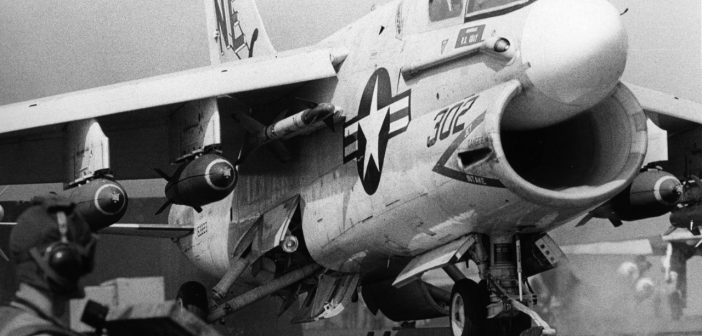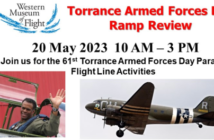As a rookie pilot I joined VF-142, the Ghost-Riders in June 1970. The unit recently returned from a cruise aboard the USS Constellation and were flying the newer F-4J Phantom. This was to be my squadron and home for the rest of my active duty service.
The squadron was supposed to deploy on the USS Enterprise for Vietnam in January of 1971, but the ship was still in the dock at Norfolk, Virginia for refueling and overhaul. In February, half of the Air Wing, roughly half of the planes, aircrew and support personnel from each squadron deployed on the Enterprise. This would take her from Norfolk around the Horn to Alameda Naval Station in San Francisco Bay (It was too large to fit through the Panama Canal). There was snow on the deck of the Big E when we departed, but it soon warmed up as we headed south. Though flight ops were limited, mainly due to the lack of bingo fields (nearby backup airfields), we did get to stop for several days in Rio de Janeiro the week before Marti Gras. It sure beat visits to Da Nang or Olongapo, PI, as I was later to discover. Going around the Horn we encountered huge seas with swells that brought green water over the bow. I visited the bridge and on a cloudless day with bright blue skies the windshield wipers were in constant operation. My thoughts turned to those fearless, foolish souls who first braved such waters in fragile wooden vessels whose masts barely reached our flight deck. How terrifying it must have been, especially at night.
As we headed north abeam Lima, Peru, our planned in-port stop had been cancelled due to political problems. We had a full flight schedule. About midday an A-7 lost its canopy on the catapult-shot off of the number 1 bow-cat. The canopy came back and struck the right horizontal stabilizer of the A-7 and damaged it severely. Though the plane was flyable, it was uncontrollable at slower approach speeds and, after attempting two approaches, it was determined that the pilot would have to eject alongside the ship for there was no bingo field. The word got out and we all headed topside to watch the show—and what a show it was.
All other aircraft had recovered except for another A-7 that was flown by the CAG (Commander of the Air Wing). The CAG had looked over the stricken aircraft and reported the damage. He flew off its left wing as the aircraft approached abeam the port side of the carrier at around 200 knots and at about 1200 feet. The ejection went perfectly and he drifted down in the chute as the helicopter approached to pick him up. But no one was watching him as the plane, which should have nosed into the water, kept on flying. If the pilot had trimmed the nose down it should have plunged straight into the water, but without his weight and that of the ejection seat, the plane remained in balanced flight. It continued straight ahead for about a mile and a half and then commenced a slow right turn back toward the ship. Both deck-side catwalks were filled with observers, as were the outside platforms on the island, where I was perched shoulder to shoulder with other looky-loos. As the plane headed back toward the starboard side of the ship, everyone on that side climbed onto the flight deck and began to run to the port side. This did not please the Air Boss one bit as he came up on the loud speaker and hollered, “Get off my Deck!” His voice could be heard within a 10-mile radius.
Meanwhile the A-7 continued in a right turn back across the bow and now rolled left, descending slightly to turn back toward the ship from the port side. “Who the hell is flying that thing?” we all thought. The masses on the flight deck now reversed course and headed toward the starboard side as the Air Boss raged. This was getting way too uncomfortable as there was absolutely no place to go if that thing decided to rendezvous with the island (the command center for flight deck operations, standing over 150 ft. above the flight deck). Fortunately, it continued its left roll and nosed into the water only about 300 yards in front of the bow. That was a lot more show and far more excitement than planned. Hardly anyone noticed when the helicopter recovered the pilot and brought him back aboard on the aft flight deck.




